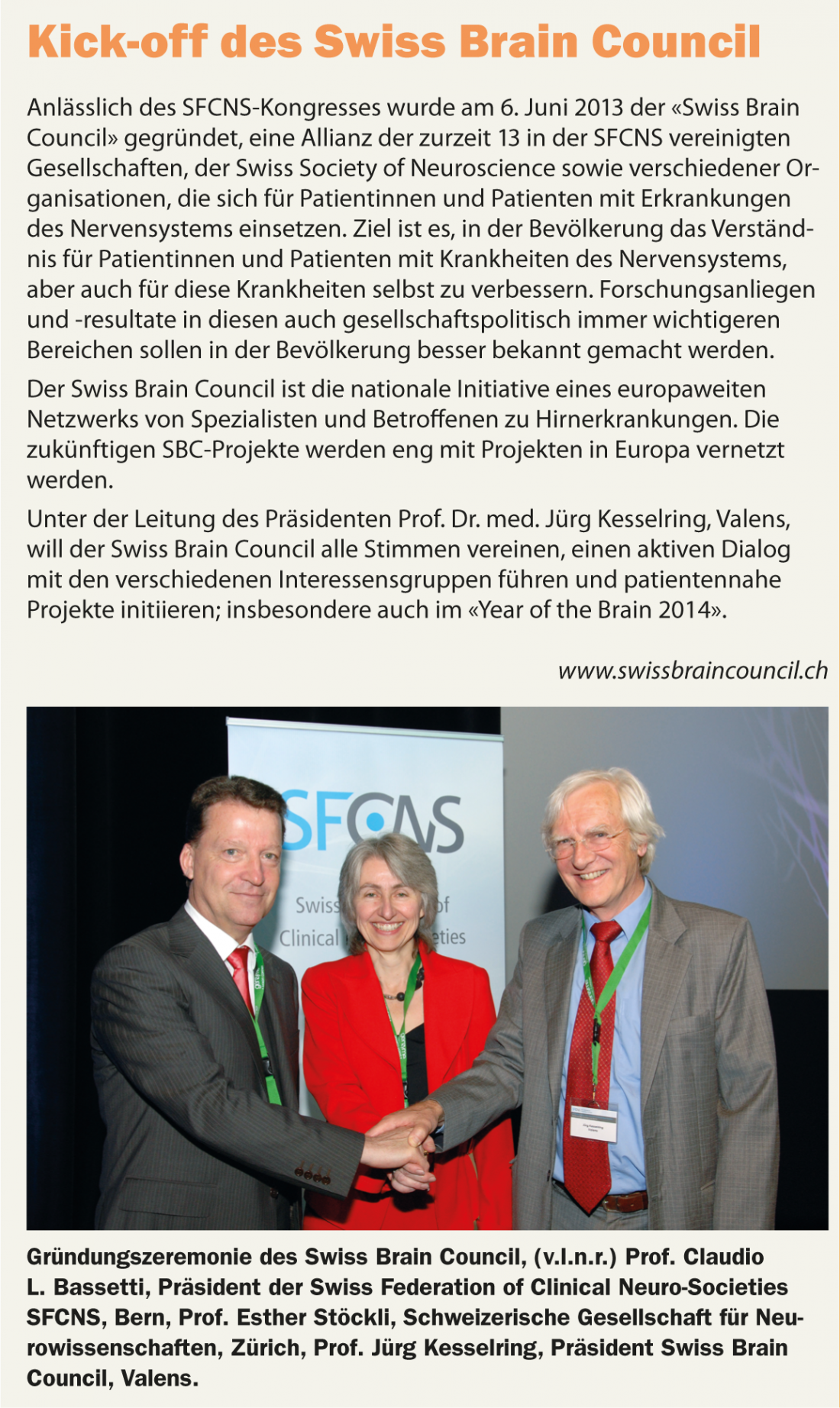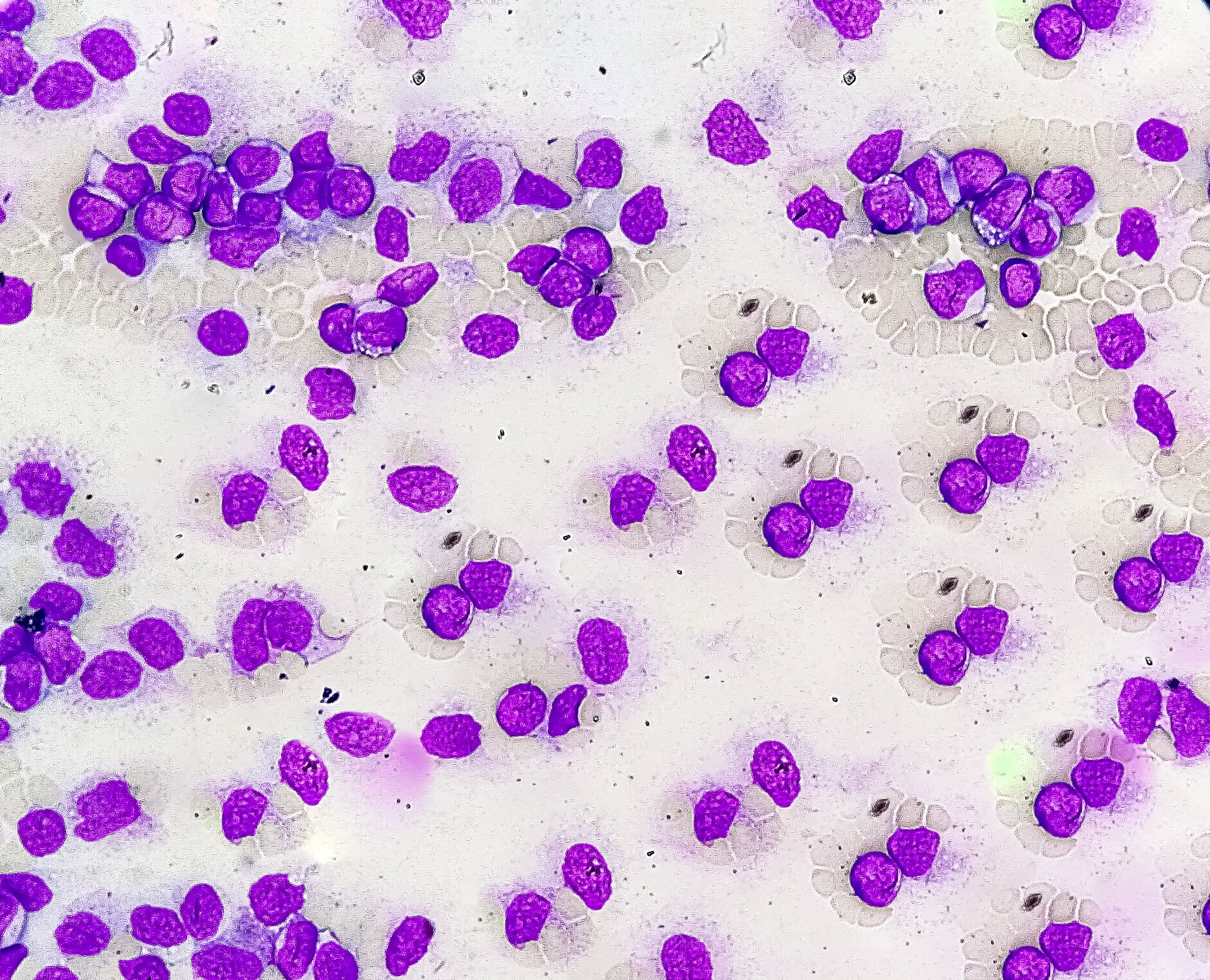Over the past 20-30 years, new insights into mechanisms that may lead to affective disorder have been continuously gained. The focus is on neurobiological mechanisms in which chronic stress plays a central role. At this year’s congress of the Swiss Federation of Clinical Neuro-Societies (SFCNS), experts from basic and clinical research reported on the latest findings regarding the development of depression and bipolar disorder. In the field of MS, clinical testing of various new substances is already well advanced. This was also discussed in Montreux.
tress leads to activation of the HPA axis (hypothalamus-pituitary-adrenal) and release of stress hormones. Via a negative feedback mechanism, the HPA axis is normally slowed down again and hormone release is throttled. In appropriately predisposed individuals, this feedback mechanism fails and the HPA axis remains permanently activated.
Depression – the network hypothesis
In contrast to earlier theories, according to which depression is thought to be caused by a neurochemical imbalance, it is now thought that depression is caused by disturbances of information processes in certain neuronal networks (network hypothesis of depression) [1]. “If you expose animals to chronic stress, they develop cognitive disorders, depression-like behaviors and anxiety,” said Prof. Carmen Sandi, MD, Lausanne. At the molecular level, Neural Cell Adhesion Molecules (NCAM) appear to be important mediators of the effects of stress on the brain. In animal studies with rodents exposed to chronic stress, Sandi and colleagues found atrophy of the hippocampus and structural changes in the prefrontal cortex and amygdala with corresponding functional changes. At the same time, they found altered patterns of NCAM expression, suggesting that these molecules have a key role in the development of stress-induced neuronal damage and in neuroprotection [2–4]. NCAMs could thus become the target of a new approach to the treatment of depression. “Furthermore, both a personality structure characterized by strong anxiety and stressful experiences before puberty seem to increase vulnerability to stressful situations and thus predispose to the development of depression. Prevention would therefore be very important here,” says Prof. Sandi [5].
Imaging in depression and anxiety disorders
Although much is now known about the mechanisms leading to depression, no link can be established between the clinical phenotype of the disease and the genotype. With the help of imaging techniques (e.g., positron emission tomography, magnetic resonance spectroscopy, functional magnetic resonance imaging), it is hoped that different endophenotypes can be used to better define clinical phenotypes and develop new tailored treatments [6]. “Imaging is important to be able to make a link between the genes, biochemical processes, functional systems, endophenotype and clinical phenotype. We need imaging to be able to translate targets identified in humans into animal models or, conversely, dysfunctional behaviors in animals into clinical research,” explained Prof. Erich Seifritz, MD, Zurich. The first to work with imaging were Drevets et al. who used PET to show that patients with depression had significant, circumscribed metabolic changes and specific alterations that were absent in people without depression [7]. A few years later, Pezawas et al. discovered structural alterations in people without depression but with a genetic risk constellation and a functional polymorphism of the serotonin transporter gene that were not found in people who were not carriers of this polymorphism [8]. This is the first time that an endophenotype has been identified that is associated with an increased risk of disease but without clinical manifestations. Another example is the work of Sheline et al. who used functional MRI to show that patients with major depression have much denser connectivity of the dorsal nexus with different brain areas than healthy individuals [9]. “Building on these results, we found in our own study with healthy subjects that ketamine, a powerful antidepressant, significantly reduced connectivity in the dorsal nexus,” said Prof. Seifritz [10].
Another interesting paper is that of de Rubeis et al. who found identical changes in activity and inactivity in certain brain areas in successfully treated patients with depression, regardless of whether pharmacotherapy or cognitive behavioral therapy had been done [11]. “We hope that the insights we gain from research with imaging techniques will open up possibilities for treating the very heterogeneous disease of depression more specifically in the future,” Prof. Seifritz concluded.
Bipolar disorder: a multisystem disorder?
Bipolar disorder is relatively common, with a prevalence of 2-3%, and most often begins in adolescence or young adulthood. Recently, it has been advocated that bipolar disorder should be viewed as part of a multisystem disorder [12]. According to this theory, various mechanisms lead to cerebral and peripheral immuno-inflammation, which in turn can trigger bipolar disorder, but also diabetes, obesity, hypertension, and cerebro- and cardiovascular disease(Fig. 1). “One of the central mechanisms leading to this immuno-inflammation is stress,” said Prof. Jean-Michel Aubry, MD, Geneva. It is known that stress is an environmental factor that triggers both depressive and manic episodes, and that events with high stress levels are the strongest predictors of relapse.

Vulnerability to stress varies greatly among individuals and depends on cognitive, familial, and genetic factors. Interestingly, with increasing age, stress increases the risk of developing bipolar disorder less and less, which is why it is thought that there is a critical window of time when stress leads to brain changes that can result in bipolar disorder [13, 14]. As in unipolar depression, the HPA axis is also overactivated in bipolar disorder. Permanent dysregulation of the HPA axis in patients in remission indicates a higher risk of relapse.
Epidemiological studies show that offspring of parents with affective disorders are at increased risk of developing an affective or an anxiety disorder themselves [15]. In such children and adolescents, elevated cortisol levels indicate mild disturbances of the HPA axis, which may increase susceptibility to bipolar disorder [16].
In patients with bipolar disorder, elevated levels of IL-6 and TNF-α are found in early stages of the disease and during depressive and manic episodes [17, 18]. The immune system may even be activated before the onset of the disease. Whether these immunologic abnormalities coincide with HPA axis dysfunction in at-risk individuals is not yet known. “In summary, both genetic and environmental factors (psychological stress) contribute to neuroendocrine and immunological vulnerability, which increases the risk for bipolar disorder, but also for inflammatory diseases,” said Prof. Aubry [18].
New substances in multiple sclerosis
Multiple sclerosis (MS) is one of the topics that cannot be missed at any neurology-focused event, and Montreux is no exception. In recent years, intensive research in this field has led, among other things, to new therapeutic options becoming available. Clinical testing of two other drugs, teriflunomide and alemtuzumab, is well advanced. Teriflunomide, available in oral form, is an active metabolite of leflunomide [19]. Leflunomide demonstrated anti-inflammatory effects in various animal models of autoimmune diseases, including experimental autoimmune encephalomyelitis (EAE). Teriflunomide causes inhibition of dihydroorotate dehydrogenase (DHODH), an enzyme important in pyrimidine neurosynthesis. Thus, it reduces clonal expansion of activated lymphocytes and inflammatory activity in MS.
TEMSO and TOWER
The phase III TEMSO study compared two different doses of teriflunomide (7 or 14 mg) with placebo in 1088 patients with relapsing-remitting MS (RRMS) [20]. This showed a relapse rate reduction of 31.2 and 31.5%, respectively (p<0.001), and a significant reduction in the risk of disability progression of 29.8% for the 14 mg dose (p=0.03). The most common side effects recorded were diarrhea and nausea, temporary thinning of hair, and a slight increase in liver enzymes. However, the side effects rarely led to discontinuation of therapy. The dose-blinded extension phase of TEMSO, with 68% of the original study population, showed a sustained effect of teriflunomide treatment on clinical and MRI endpoints over a five-year period after initial randomization [21].
TOWER also compared two doses of teriflunomide monotherapy with placebo [22]. The 14 mg dose reduced the annual relapse rate (ARR) versus placebo by 36.6% (p<0.001) and disability progression confirmed over at least 12 weeks by 31.5% (p=0.044).
Selective B- and T-cell destruction
The selective anti-CD52 monoclonal antibody alemtuzumab leads to selective destruction of T and B lymphocytes via antibody-dependent cytotoxicity and complement-mediated cell lysis [23]. In both the CARE-MS I and II trials, alemtuzumab proved superior to interferon beta-1a s.c. [24, 25]. Treatment produced a reduction in clinical disease activity (reduction in relapse risk of 54.9% in CARE-MS I and 49.4% in CARE-MS II), but also resulted in a notable rate of secondary autoimmune disease (16-19% autoimmune thyroiditis, 1% immune thrombocytopenia). Thyroid disease was treatable in most cases by conventional oral medication. Immune thrombocytopenia also responded promptly and persistently to first-line treatment.

Source:2nd SFCNS Congress – Swiss Federation of Clinical Neurosocieties, June 5-7, 2013, Montreux.
Literature:
- Castrén E: Nat Rev Neurosci 2005; 6: 241-246.
- Sandi C: Nat Rev Neurosci 2004; 5: 917-930.
- Sandi C, Bisaz R: Neuroendocrinology 2007; 85: 158-176.
- Bisaz R, Sandi C: Genes Brain Behav 2010; 9: 353-364.
- Sandi C, Richter-Levin G: Trends Neurosci 2009; 32: 312-320.
- Hasler G, Northoff G: Mol Psychiatry 2011; 16: 604-619.
- Drevets WC, et al: Science 1992; 256: 1696.
- Pezawas L, et al: Nat Neurosci 2005; 8: 828-834.
- Sheline YI, et al: Proc Natl Acad Sci 2010; 107: 11020-11025.
- Scheidegger M, et al: PLoS One 2012; 7: e44799.
- De Rubeis RJ, et al: Nat Rev Neurosci 2008; 9: 788-796.
- Leboyer M, et al: J Affect Disord 2012; 141: 1-10.
- Lupien SJ, et al: Nat Rev Neurosci 2009; 10: 434-445.
- Hillegers MH, et al: Br J Psychiatry 2004; 185: 97-101.
- Vandeleur C, et al: Bipolar Disord 2012; 14: 641-653.
- Ellenbogen MA, et al: Bipolar Disord 2010; 12: 77-86.
- Kauer-Sant’Anna M, et al: Int J Neuropsychopharmacol 2009; 12: 447-458.
- Duffy A, et al: Early Interv Psychiatry 2012; 6: 128-137.
- Papadopoulou A, et al: Expert Rev Clin Pharmacol 2012; 5: 617-628.
- O’Connor PW, et al: N Engl J Med 2011; 365: 1293-1303.
- O’Connor P, et al: Mult Scler 2011; 17, P924.
- Miller A, et al: Neurology 2013; 80(Annual Meeting Abstracts). S01.004.
- Wiendl H, Kieseier B: Nat Rev Neurol 2013; 9: 125-126.
- Cohen JA, et al: Lancet 2012; 380: 1819-1828.
- Coles AJ, et al: Lancet 2012; 380: 1829-1839.
- Pryce CR, Seifritz E: Psychoneuroendocrinology 2011; 36: 308-329.











